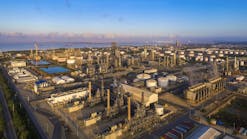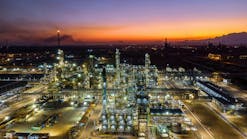With movement of oil by rail rising sharply, producers and refiners have corresponding interest in developments affecting an industry on which they increasingly depend. As with everything associated with oil and natural gas, the top concern must be safety.
On that issue, the railroad industry has a solid record with tragic blemishes. Accidents understandably have fanned political resistance to essential system expansion and terminal construction. The railroad industry knows it must further lower its accident rate and cut the risks of damage when accidents occur. The oil industry should seek ways to help.
Accident rate down
According to the Association of American Railroads (ARA), the train accident rate—the number of accidents per million train-miles—fell by 80% during 1980-2012. Since 2000, the decline has been 44%. Frequencies of rail-employee injuries and grade-crossing collisions also fell strongly during those periods.
When they happen, of course, train accidents can be devastating. Last year in the US, railroads had fatal accidents in Maryland and Illinois and a major explosion and fire involving hazardous material in Ohio. On July 6 this year, an explosion and fire following derailment of an unattended freight train hauling crude oil killed 47 people in Lac-Megantic, Que., destroying part of the town. With reason, popular concern is rising over the movement of oil by rail—especially through population centers.
That movement is increasing and likely to continue doing so. Surging production of light, sweet crude and natural gas liquids in the central US and of bitumen in Alberta needs transportation not sufficiently available from the pipeline system. Blended bitumen must reach high-conversion refineries on the Gulf Coast, and light crudes must reach less-sophisticated refineries on the East Coast and refineries on the West Coast required to limit their use of heavy feedstock. The existing pipeline network was designed for a different set of logistical requirements.
As the pipeline system adapts, railroads must meet many immediate oil-transport needs. The ARA says the number of carloads of crude oil originated by major US railroads increased from 9,500 in 2008 to nearly 234,000 last year. This year, the number probably will reach 400,000. Canadian rail transport of petroleum and petroleum products through November this year was up 14% over 2012. The trends show no sign of reversing.
More oil moving on rails means more risk for mechanical mishap involving large amounts of a substance that can make gooey messes and burn when spilled. The oil industry must want that risk to be as low as a practicable throughout the logistical chain. It should treat safety initiatives by railroads and their regulators as supremely important.
An important such effort is the requirement, imposed by a 2008 law, for a system called positive train control (PTC). Still under development, the system electronically monitors trains and automatically slows or stops them when it detects hazards and failures of train operators to respond. It's designed to prevent train-train collisions, derailments caused by excessive speed, unauthorized movement into construction areas, and movement through an incorrectly positioned track switch.
Another effort aims at upgrading tank cars to lower spill risks during accidents. ARA recently urged the US Department of Transportation to toughen standards for tank-car construction and safety equipment. It estimates 78,000 of the 92,000 tank cars now carrying flammable liquids would have to be retrofitted or phased out under its recommendations.
Regulation reviewed
Regulation, too, is under review. The Government Accountability Office this month said the Federal Railroad Administration "faces several rail-safety challenges" that will strain its workforce and budget. They include oversight of the PTC system, adjusting to changing traffic flows, and keeping enough inspectors in the field.
These steps toward improved rail safety are comprehensive and costly. The oil industry should support them and acknowledge that even stronger and costlier steps still might be in order. It should welcome any measure, by or affecting any industry, promising to lower the risk that someone will be hurt by misplaced oil.

